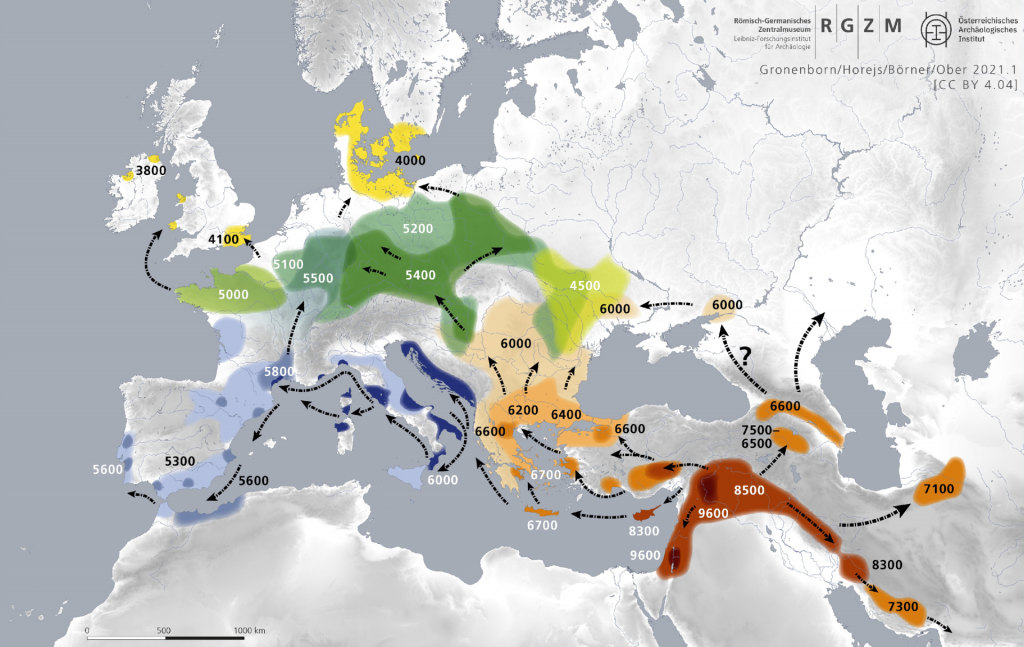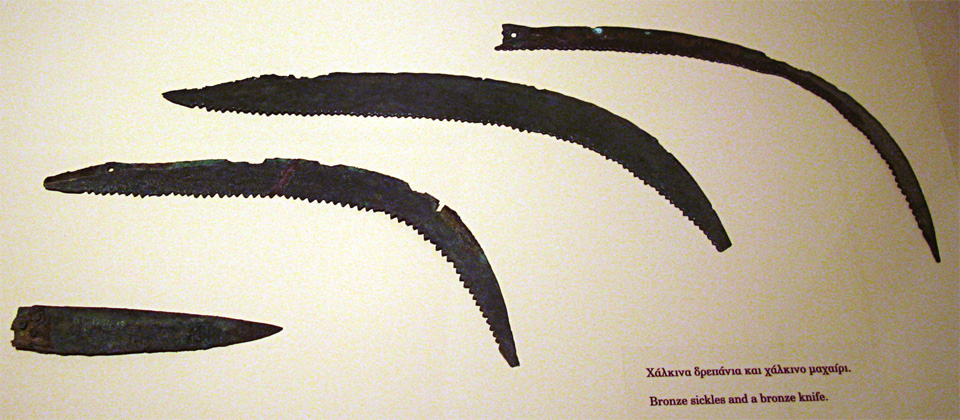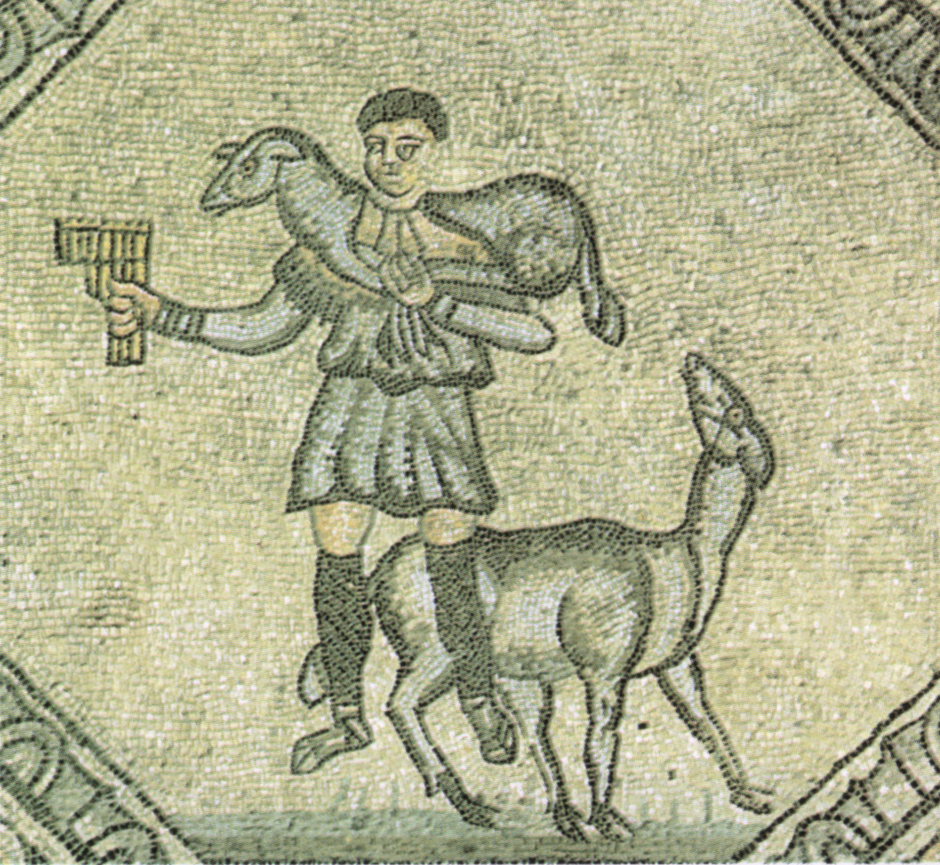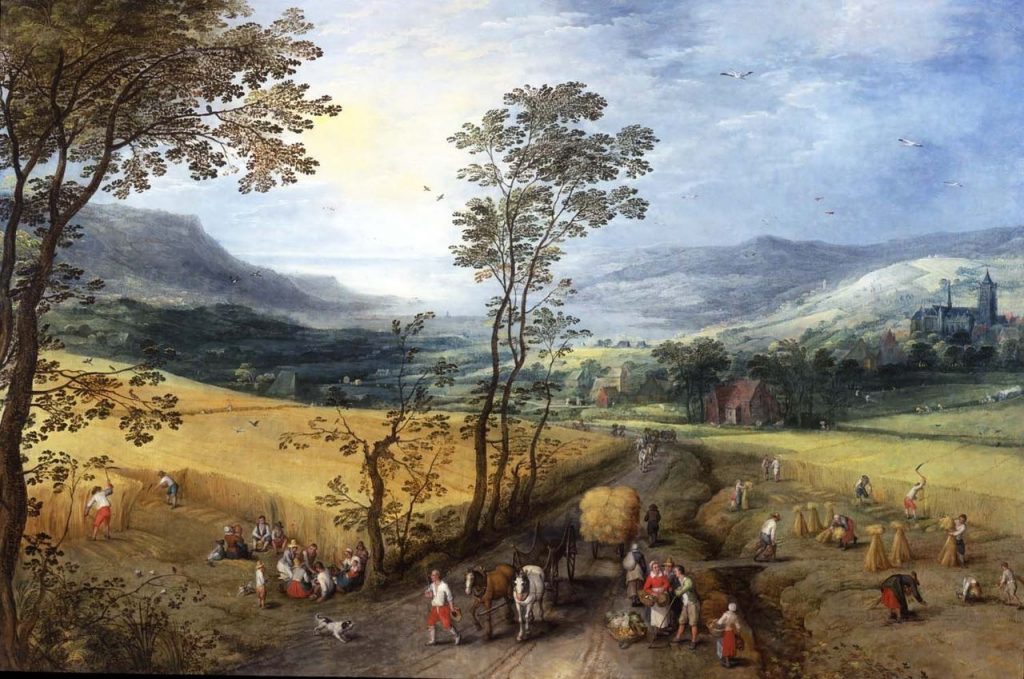
A Brief History of Agriculture
We at Advanced BioTech have compiled this brief history to help everyone understand how we got to today.
The history of agriculture is commonly divided into four broad periods:
The beginning and end dates of each period, naturally, vary widely depending upon which part of the world you’re looking at, and which developments are considered.
The Neolithic Revolution
Early agriculturists were, it is agreed, largely of Neolithic culture. Sites occupied by such people are located in southwestern Asia, in what are now Iran, Iraq, Israel, Jordan, Syria, and Turkey; in southeastern Asia, in what is now Thailand; in Africa, along the Nile River in Egypt; and in Europe, along the Danube River and in Macedonia, Thrace, and Thessaly. Early centers of agriculture have also been identified in the Huang He (Yellow River) area of China; the Indus River valley of India and Pakistan; and the Tehuacan Valley of Mexico, northwest of the Isthmus of Tehuantepec.
The dates of domesticated plants and animals vary with the regions, but most predate the 6th millennium bc, and the earliest may date from 10,000 bc. Scientists have carried out carbon-14 testing of animal and plant remains and have dated finds of domesticated sheep at 9000 bc in northern Iraq; cattle in the 6th millennium bc in northeastern Iran; goats at 8000 bc in central Iran; pigs at 8000 bc in Thailand and 7000 bc in Thessaly; onagers, or asses, at 7000 bc in Jarmo, Iraq; and horses at 4350 bc in Ukraine. The llama and alpaca were domesticated in the Andean regions of South America by the middle of the 3d millennium bc .
According to carbon dating, wheat and barley were domesticated in the Middle East in the 8th millennium bc; millet and rice in China and southeastern Asia by 5500 bc; and squash in Mexico about 8000 bc. Legumes found in Thessaly and Macedonia are dated as early as 6000 bc. Flax was grown and apparently woven into textiles early in the Neolithic period.
The farmer began, most probably, by noting which of the wild plants were edible or otherwise useful and learned to save the seed and to replant it in cleared land. Long cultivation of the most prolific and hardiest plants yielded a stable strain. Herds of goats and sheep were assembled from captured young wild animals, and those with the most useful traits-such as small horns and high milk yield-were bred. The aurochs seems to have been the ancestor of European cattle, and an Asian wild ox of the zebu, the humped cattle of Asia. The cat, dog, and chicken were domesticated very early. The transition from hunting and food gathering to a dependence on food production was gradual, and in a few isolated parts of the world has not yet been accomplished. Crops and domestic meat supplies were augmented by fish and wildfowl as well as by the meat of wild animals.
The Neolithic farmers lived in simple dwellings-in caves and in small houses of sun-baked mud brick or of reed and wood. These homes were grouped into small villages or existed as single farmsteads surrounded by fields, sheltering animals and humans in adjacent or joined buildings. In the Neolithic period, the growth of cities such as Jericho (founded c. 9000 bc) was stimulated by the production of surplus crops.
Pastoralism
Pastoralism may have been a later development. Evidence indicates that mixed farming, combining cultivation of crops and stock raising, was the most common Neolithic pattern. Nomadic herders, however, roamed the steppes of Europe and Asia, where the horse and camel were domesticated.
The earliest tools of the farmer were made of wood and stone. They included the stone adz; the sickle or reaping knife with sharpened stone blades, used to gather grain; the digging stick, used to plant seeds, and, with later adaptations, as a spade or hoe; and a rudimentary plow, a modified tree branch used to scratch the surface of the soil and prepare it for planting. The plow was later adapted for pulling by oxen.
The hilly areas of southwestern Asia and the forests of Europe had enough rain to sustain agriculture, but Egypt depended on the annual floods of the Nile to replenish soil moisture and fertility. The inhabitants of the so-called Fertile Crescent, around the Tigris and Euphrates rivers, also depended on annual floods to supply irrigation water. Drainage was necessary to prevent the carrying off of land from the hillsides through which the rivers ran. The farmers who lived in the area near the Huang He developed a system of irrigation and drainage to control the damage caused to their fields in the floodplain of the meandering river.
Although the Neolithic settlements were more permanent than the camps of hunting populations, villages had to be moved periodically in some areas, as the fields lost their fertility from continuous cropping. This was most necessary in northern Europe, where fields were produced by the slash-and-burn method of clearing. The settlements along the Nile, however, were more permanent, because the river deposited fertile silt annually.
Ancient Agriculture
With the close of the Neolithic period and the introduction of metals, the age of innovation in agriculture was largely over. The historical period-known through written and pictured materials, including the Bible, Near Eastern records and monuments, and Chinese, Greek, and Roman writings-was devoted to improvement. A few high points must serve to outline the development of worldwide agriculture in this era, roughly defined as 2500 bc to ad 500. For a similar period of development in Central and South America, somewhat later in date, see American Indians .
Some plants became newly prominent. Grapes and wine were mentioned in Egyptian records about 2900 bc, and trade in olive oil and wine was widespread in the Mediterranean area in the 1st millennium bc. Rye and oats were cultivated in northern Europe about 1000 bc.
Many vegetables and fruits, including onions, melons, and cucumbers, were grown by the 3d millennium bc in Ur. Dates and figs were an important source of sugar in the Near East, and apples, pomegranates, peaches, and mulberries were grown in the Mediterranean area. Cotton was grown and spun in India about 2000 bc, and linen and silk were used extensively in 2d-millennium China. Felt was made from the wool of sheep in Central Asia and the Russian steppes.
The horse, introduced to Egypt about 1600 bc, was already known in Mesopotamia and Asia Minor. The ox-drawn four-wheeled cart for farm work and two-wheeled chariots drawn by horses were familiar in northern India in the 2nd millennium bc.
Improvements in tools and implements were particularly important. Metal tools were longer lasting and more efficient, and cultivation was greatly improved by such aids as the ox-drawn plow fitted with an iron-tipped point, noted in the 10th century bc in Palestine. In Mesopotamia in the 3d millennium bc a funnel-like device was attached to the plow to aid in seeding, and other early forms of drills were used in China. Threshing was done with animal power in Palestine and Mesopotamia, although reaping, binding, and winnowing were still done by hand. Egypt retained hand seeding through this period, on individual farm plots and large estates alike.
Storage methods for oil and grain were improved. Granaries-jars, dry cisterns, silos, and bins of one sort or another containing stored grain-supported city populations. Indeed, without adequate food supplies and trade in food and nonfood items, the high civilizations of Mesopotamia, northern India, Egypt, and Rome would not have been possible.
Irrigation systems in China, Egypt, and the Near East were elaborated, putting more land into cultivation. The forced labor of peasants and the bureaucracy built up to plan and supervise the work of irrigation were probably basic in the development of the city-states of Sumer. Windmills and water mills, developed toward the end of the Roman period, increased control over the many uncertainties of weather. The introduction of fertilizer, mostly animal manures, and the rotation of fallow and crop land made agriculture more productive.
Mixed farming and stock raising were flourishing in the British Isles and on the continent of Europe as far north as Scandinavia at the beginning of the historical period, already displaying a pattern that persisted throughout the next 3000 years. According to region, fishing and hunting supplemented the food grown by agriculturists.
Shortly after the time of Julius Caesar, the Roman historian Cornelius Tacitus described the “Germans” as a tribal society of free peasant warriors, who cultivated their own lands or left them to fight. About 500 years later, a characteristic European village had a cluster of houses in the middle, surrounded by rudely cultivated fields comprising individually owned farmlands; and meadows, woods, and wasteland were used by the entire community. Oxen and plow were passed from one field to another, and harvesting was a cooperative effort.
The Roman Empire
Rome appears to have started as a rural agricultural society of independent farmers. In the 1st millennium bc, after the city was established, however, agriculture started a capitalistic development that reached a peak in the Christian era. The large estates that supplied grain to the cities of the empire were owned by absentee landowners and were cultivated by slave labor under the supervision of hired overseers. As slaves, usually war captives, decreased in number, tenants replaced them.
The late Roman villa of the Christian era approached the medieval manor in organization; slaves and dependent tenants were forced to work on a fixed schedule, and tenants paid a predetermined share to the estate owner. By the 4th century ad , serfdom was well established, and the former tenant was attached to the land.
The Middle Ages
The feudal period in Europe began soon after the fall of the Roman Empire, reaching its height about ad 1100. This period was also that of the development of the Byzantine Empire and of the power of the Saracens in the Middle East and southern Europe. Spain, Italy, and southern France, in particular, were affected by events outside continental Europe.
Islamic Empire
In the Arab period in Egypt and Spain, irrigation was extended to previously sterile or unproductive land. In Egypt, grain production was sufficient to allow the country to sell wheat in the international market. In Spain, vineyards were planted on sloping land, and irrigation water was brought from the mountains to the plains. In some Islamic areas, oranges, lemons, peaches, and apricots were cultivated.
Rice, sugarcane, cotton, and such vegetables as spinach and artichokes, as well as the characteristic Spanish flavoring saffron, were produced. The silkworm was raised, and its food, the mulberry tree, was grown.
By the 12th century agriculture in the Middle East was static, and Mesopotamia, for example, fell back to subsistence level when its irrigation systems were destroyed by the Mongols. The Crusades increased European contact with Islamic lands and familiarized western Europe with citrus fruits and silk and cotton textiles.
The structure of agriculture was not uniform. In Scandinavia and eastern Germany, the small farms and villages of previous years remained. In mountainous areas and in the marshlands of Slavic Europe, the manorial system could not flourish. Stock raising and olive and grape culture were normally outside the system.
The Manor System
A large manor had a mill for grinding grain, an oven for baking bread, fishponds, orchards, perhaps a winepress or oil press, and herb and vegetable gardens. Bees were kept to produce honey.
Woolen garments were produced from sheep raised on the manor. The wool was spun into yarn, woven into cloth, and then sewn into clothing. Linen textiles could also be produced from flax, which was grown for its oil and fiber.
A manor required roughly 350 to 800 ha (about 900 to 2000 acres) of arable land and the same amount of other prescribed lands, such as wetlands, woodlots, and pasture. Typically, the manor was a self-contained community. On it was the large home of the holder of the fief-a military or church vassal of rank, sometimes given the title lord-or of his steward. A parish church was frequently included, and the manor might make up the entire parish. One or more villages might be located on the manor, and village peasants were the actual farmers. Under the direction of an overseer, they produced the crops, raised the meat and draft animals, and paid taxes in services, either forced labor on the lord’s lands and other properties or forced military service.
The food served in a feudal castle or manor house varied-depending on the season and the lord’s hunting prowess. Hunting for meat was, indeed, the major nonmilitary work of the lord and his military retainers. The castle residents could also eat domestic ducks, pheasants, pigeons, geese, hens, and partridges; fish, pork, beef, and mutton; and cabbages, turnips, carrots, onions, beans, and peas. Bread, cheese and butter, ale and wine, and apples and pears also appeared on the table. In the south, olives and olive oil might be used, often instead of butter.
Leather was produced from the manor’s cattle. Horses and oxen were the beasts of burden; as heavier horses were bred and a new kind of harness was developed, they became more important. A blacksmith, wheelwright, and carpenter made and maintained crude agricultural tools.
Crop Rotation
The cultivation regime was rigidly prescribed. The arable land was divided into three fields: one sown in the autumn in wheat or rye; a second sown in the spring in barley, rye, oats, beans, or peas; and the third left fallow. The fields were laid out in strips distributed over the three fields, and without hedges or fences to separate one strip from another. Each male peasant head of household was allotted about 30 strips. Helped by his family and a yoke of oxen, he worked under the direction of the lord’s officials. When he worked on his own fields, if he had any, he followed village custom that was probably as rigid as the rule of an overseer.
About the 8th century a 4-year cycle of rotation of fallow appeared. The annual plowing routine on 400 ha would be 100 ha plowed in the autumn and 100 in the spring, and 200 ha of fallow plowed in June. These three periods of plowing, over the year, could produce two crops on 200 ha, depending on the weather. Typically, ten or more oxen were hitched to the tongue of the plow, often little more than a forked tree trunk. The oxen were no larger than modern heifers. At harvest time, all the peasants, including women and children, were expected to work in the fields. After the harvest, the community’s animals were let loose on the fields to forage.
Open-Field Farming
Some manors used a an open-field system. Each strip of land, with an area of roughly 0.4 ha (about 1 acre), measured about 200 m (about 220 yd) in length and from 1.2 to 5 m (4 to 16.5 ft) in width. The lord’s strips were similar to those of the peasants distributed throughout good and bad field areas. The parish priest might have lands separate from the community fields or strips that he worked himself or that were worked by the peasants.
In all systems, the lord’s fields and needs came first, but about three days a week might be left for work on the family strips and garden plots. Wood and peat for fuel were gathered from the commonly held woodlots, and animals were pastured on village meadows. When surpluses of grain, hides, and wool were produced, they were sent to market.
About 1300 a tendency to enclose the common lands and to raise sheep for their wool alone first became apparent. The rise of the textile industry made sheep raising more profitable in England, Flanders, Champagne, Tuscany, Lombardy, and the region of Augsburg in Germany. At the same time, regions about the medieval towns began to specialize in garden produce and dairy products. Independent manorialism was also affected by the wars of 14th- and 15th-century Europe and by the widespread plague outbreaks of the 14th century. Villages were wiped out, and much arable land was abandoned. The remaining peasants were discontented and attempted to improve their conditions.
With the decline in the labor force, only the best land was kept in cultivation, and in southern Italy, for instance, irrigation helped to increase production on the more fertile soils. The emphasis on grain was replaced by diversification, and items requiring more care were produced, such as wine, oil, cheese, butter, and vegetables.
Modern Agriculture
By the 16th century, population was increasing in Europe, and agricultural production was again expanding.
The nature of agriculture there and in other areas was to change considerably in succeeding centuries. Several reasons can be identified. Europe was cut off from Asia and the Middle East by an extension of Turkish power. New economic theories were being put into practice, directly affecting agriculture. Also, continued wars between England and France, within each of these countries, and in Germany consumed capital and human resources.
A new period of exploration and colonization was undertaken to circumvent Turkey’s control of the spice trade, to provide homes for religious refugees, and to provide wealth for European nations convinced that only precious metals constituted wealth.
Colonial agriculture was carried out not only to feed the colonists but also to produce cash crops and to supply food for the home country. This meant cultivation of such crops as sugar, cotton, tobacco, and tea and production of animal products such as wool and hides. From the 15th to the 19th century the slave trade provided needed laborers, replacing natives killed by unaccustomed hard labor in unfavorable climates and substituting for imported Europeans on colonial plantations that required a larger labor force than the colony could provide. Slaves from Africa worked, for instance, in the Caribbean area on sugar plantations and in North America on indigo and cotton plantations. Indians were virtually enslaved in Mexico. Indentured slaves from Europe, and especially from the prisons of England, provided both skilled and unskilled labor to many colonies. Ultimately, however, both slavery and serfdom were substantially wiped out in the 19th century.
When encountered by the Spanish conquistadors, the more advanced Indians in the New World had intensive agricultural economies but no draft or riding animals and no wheeled vehicles. Squash, beans, peas, and corn had long since been domesticated. Land was owned by clans and other kinship groups or by ruling tribes that had formed sophisticated governments, but not by individuals or individual families. Several civilizations had risen and fallen in Central and South America by the 16th century. Those met by the Spanish were the Aztec, Inca, and Maya.
The scientific revolution resulting from the Renaissance and the Age of Enlightenment in Europe encouraged experimentation in agriculture as well as in other fields. Trial-and-error efforts in plant breeding produced improved crops, and a few new strains of cattle and sheep were developed. Notable was the Guernsey cow breed, still a heavy milk producer today. Enclosure was greatly speeded up in the 18th century, and individual landowners could determine the disposition of land and of pasture, previously subject to common use. Crop rotation, involving alternation of legumes with grain, was more readily practiced outside the village strip system inherited from the manorial period. In England, where scientific farming was most efficient, enclosure brought about a fundamental reorganization of landownership. From 1660 on, the large landowners had begun to add to their properties, frequently at the expense of small independent farmers. By Victorian times, the agricultural pattern was based on the relationship between the landowner, dependent on rents; the farmer, producer of crops; and the landless laborer, the “hired hand” of American farming lore. Drainage brought more land into cultivation, and, with the Industrial Revolution, farm machinery was introduced.
It is not possible to fix a clear decade or series of events as the start of the agricultural revolution through technology. Among the important advances were the purposeful selective breeding of livestock, begun in the early 1700s, and the spreading of limestone on farm soils in the late 1700s. Mechanical improvements of the traditional wooden plow began in the mid-1600s with small iron points fastened onto the wood with strips of leather. In 1797, Charles Newbold (1764-1835), a blacksmith in Burlington, N.J., introduced the cast-iron moldboard plow. John Deere, another American blacksmith, further improved the plow in the 1830s and manufactured it in steel. Other notable inventions included the seed drill of the English agriculturist Jethro Tull, developed in the early 1700s and progressively improved for more than a century; the reaper of Cyrus McCormick in 1831; and numerous new horse-drawn threshers, cultivators, grain and grass cutters, rakes, and corn shellers. By the late 1800s, steam power was frequently used to replace animal power in drawing plows and in operating threshing machinery.
The demand for food for urban workers and raw materials for industrial plants produced a realignment of world trade. Science and technology developed for industrial purposes were carried over into agriculture, eventually resulting in the agribusinesses of the mid-20th century.
In the 17th and 18th centuries the first systematic attempts were made to study and control pests. Before this time, handpicking and spraying were the usual methods of pest control. In the 19th century, poisons of various types were developed for use in sprays, and biological controls such as predatory insects were also used. Resistant plant varieties were cultivated; this was particularly successful with the European grapevine, in which the grape-bearing stems were grafted onto resistant American rootstocks to defeat the Phylloxera aphid.
Improvements in transportation affected agriculture. Roads, canals, and rail lines enabled farmers to obtain needed supplies and to market their produce over a wider area. Food could be protected in transport and shipped more economically than before as a result of rail, ship, and refrigeration developments of the late 19th and early 20th centuries. Efficient use of these developments led to increasing specialization and eventual changes in the location of agricultural suppliers. In the last quarter of the 19th century, for example, Australian and North American suppliers displaced European suppliers of grain in the European market. When grain production proved unprofitable for European farmers, or an area became more urbanized, specialization in dairying, cheese making, and other products was emphasized.
The impetus toward more food production in the era following World War II was a result of a new population explosion. A so-called green revolution, involving selective breeding of traditional crops for high yields, new hybrids, and intensive cultivation methods adapted to the climates and cultural conditions of densely populated countries such as India, temporarily stemmed the pressure for more food. A worldwide shortage of petroleum in the mid-1970s, however, reduced the supplies of nitrogen fertilizer helpful to the success of the new varieties. Simultaneously, erratic weather and natural disasters such as drought and floods reduced crop levels throughout the world. Famine seemed to be imminent in the Indian subcontinent and was common in many parts of Africa south of the Sahara. Economic conditions, particularly uncontrolled inflation, threatened the food supplier and the consumer alike. These problems became the determinants of agricultural change and development.
To learn how MultiFIX is playing a part in the Future of Agriculture, please visit our main site at MultiFIX.com.






